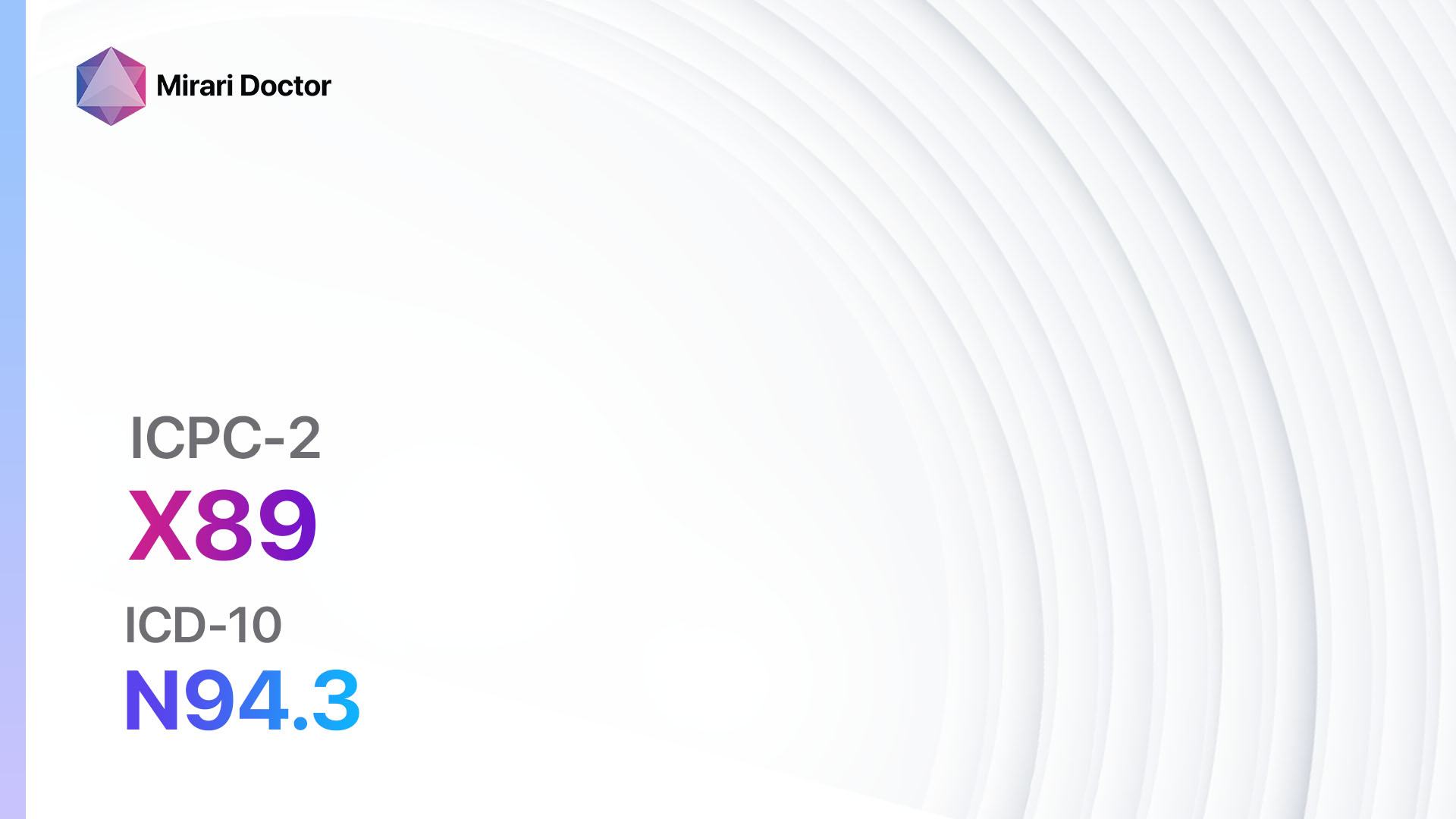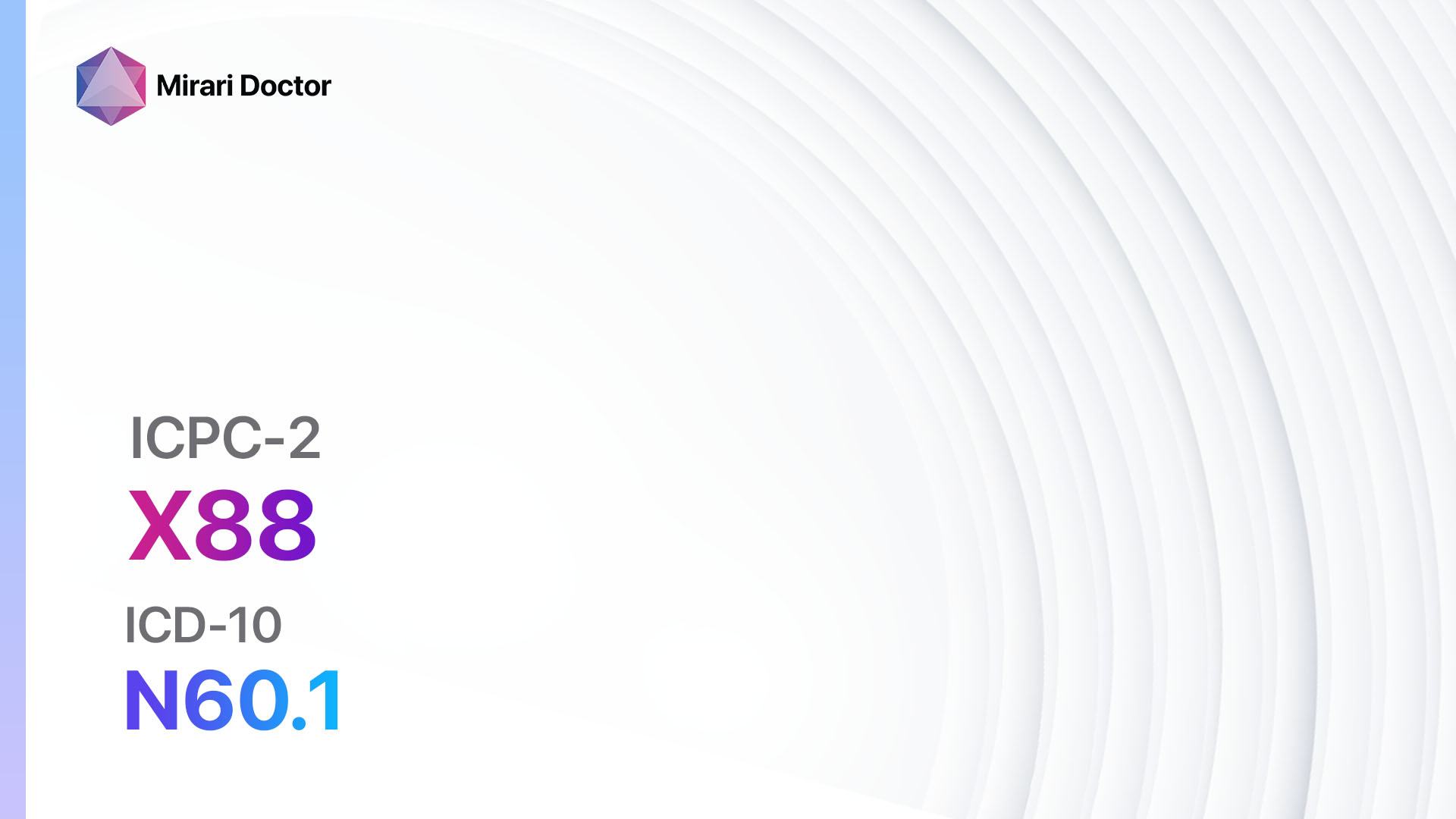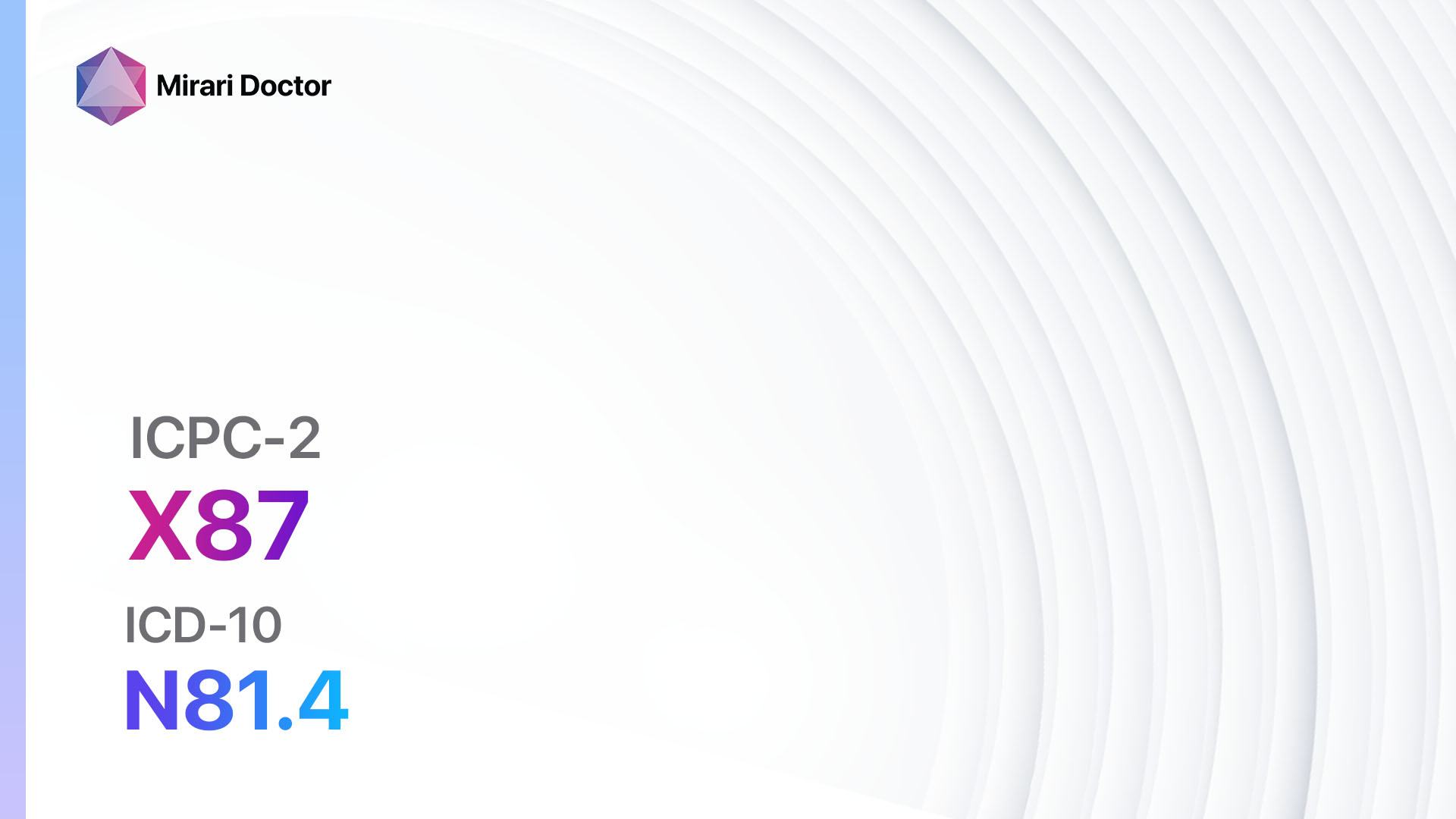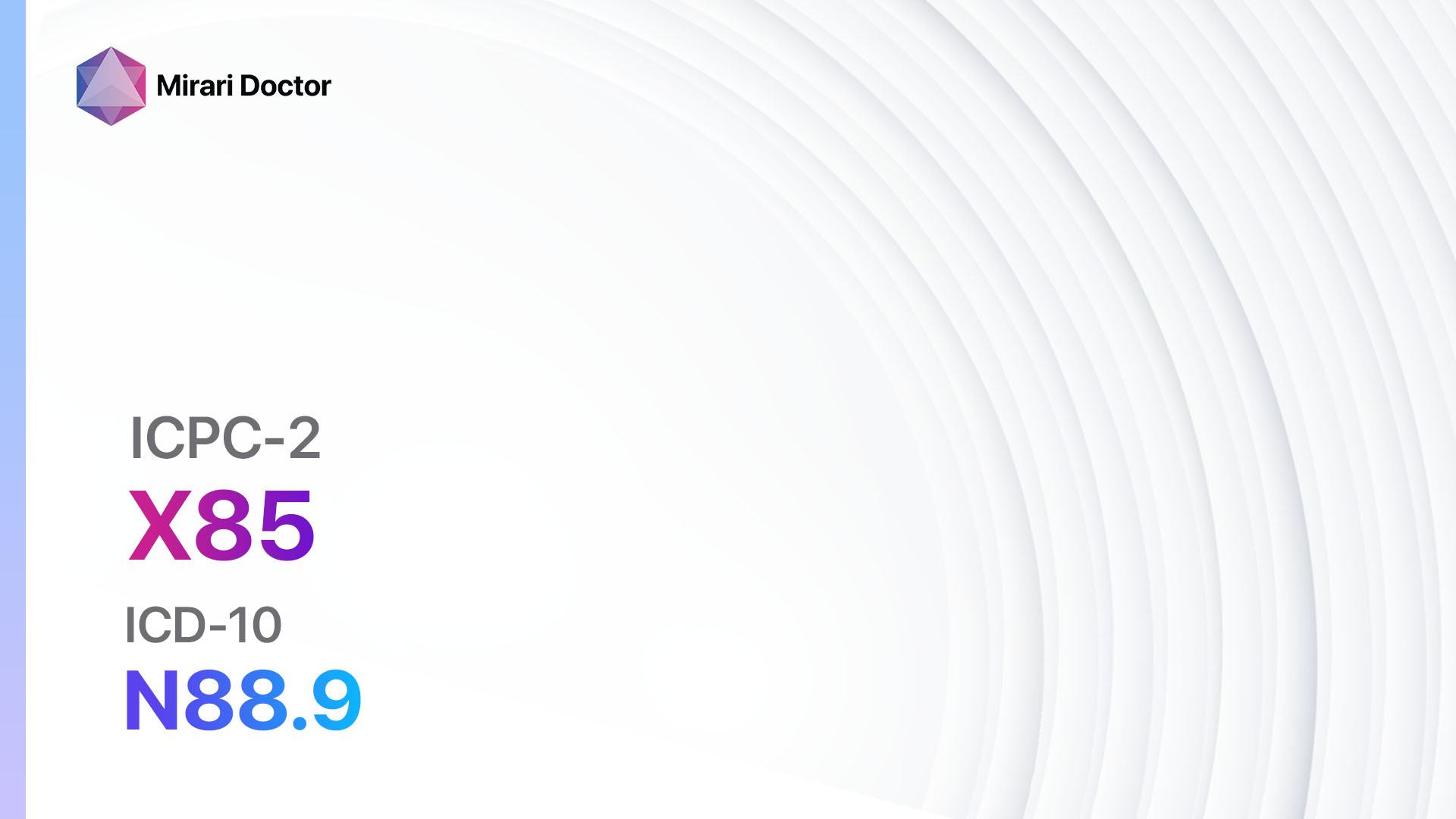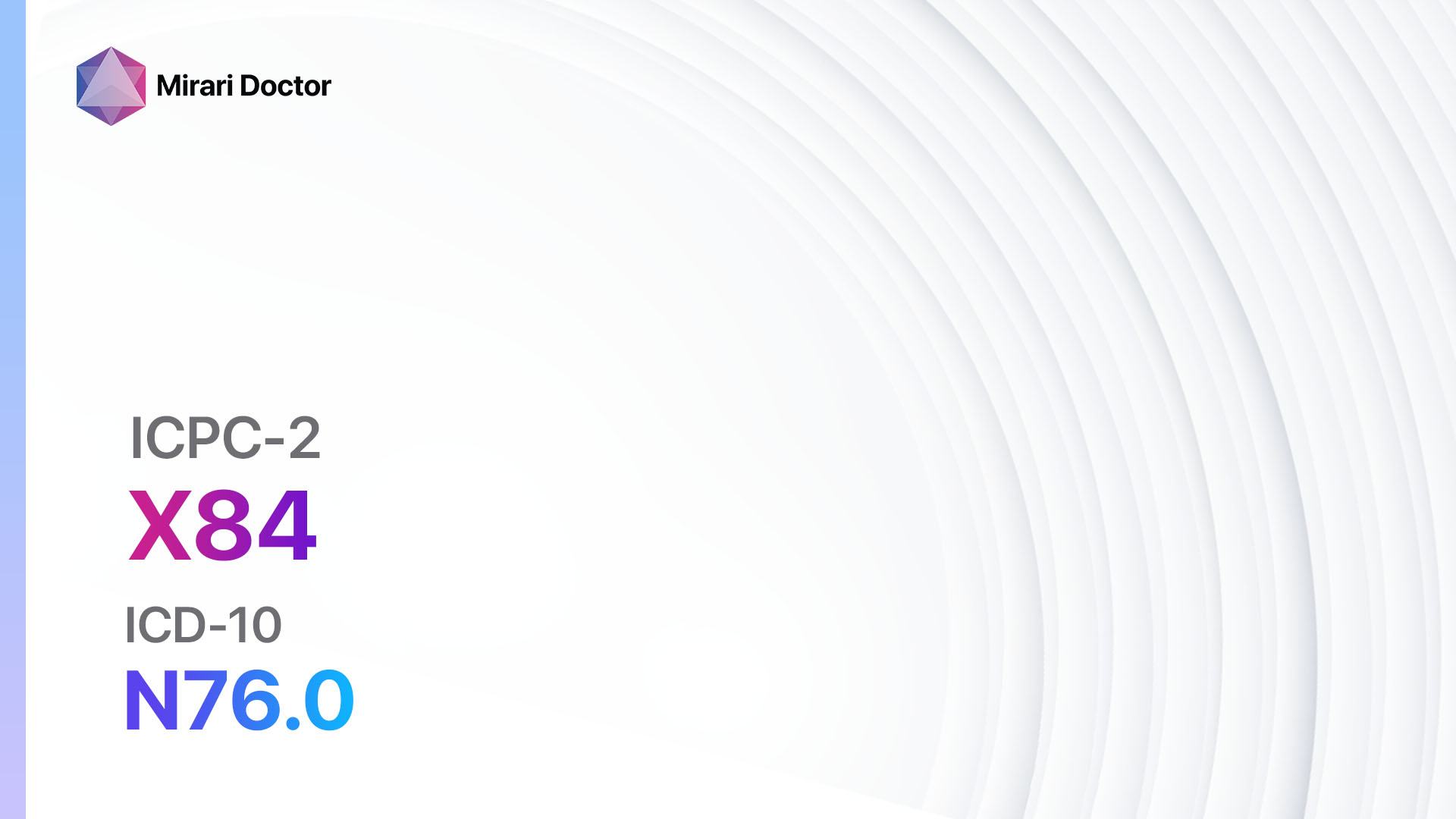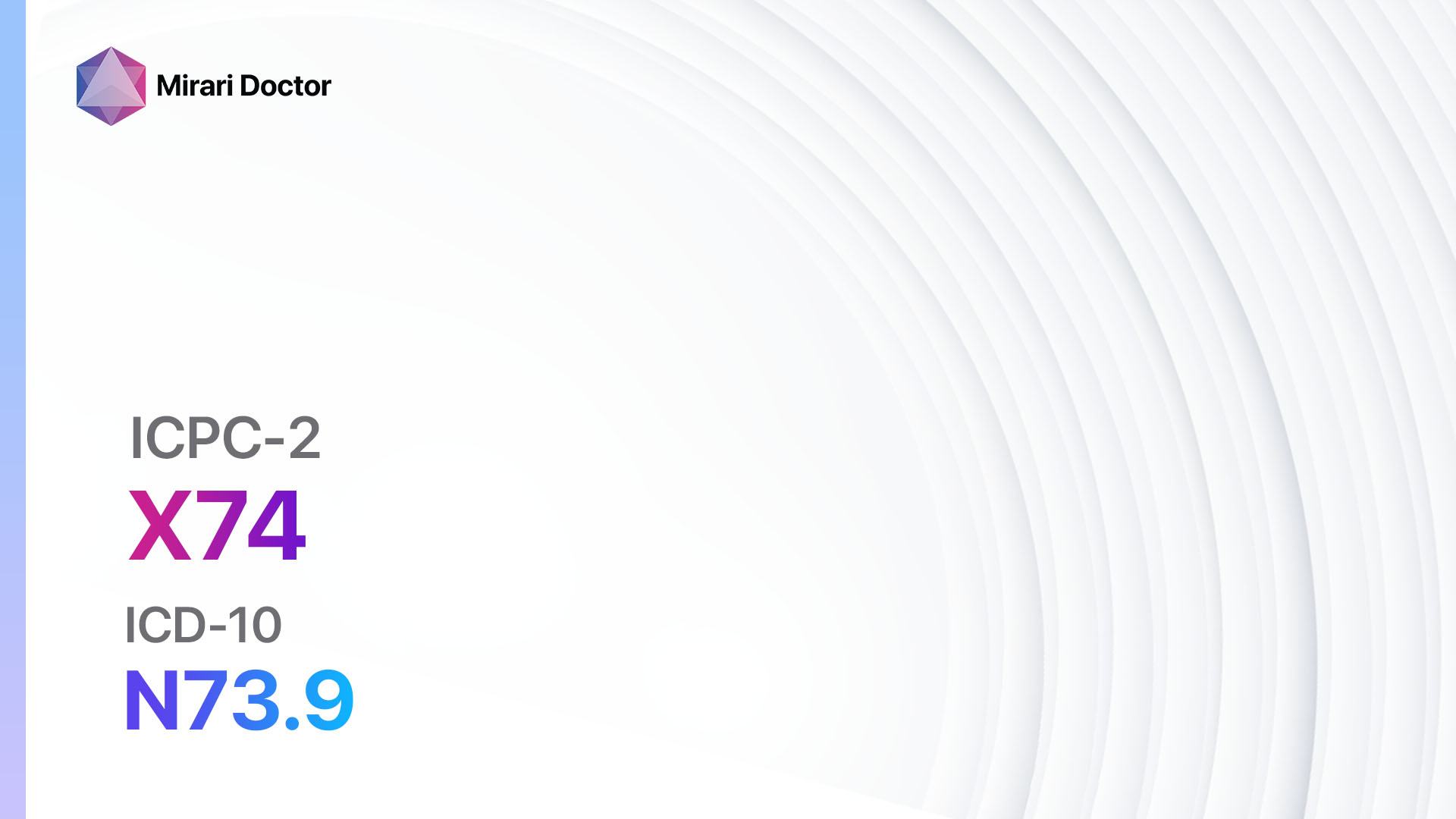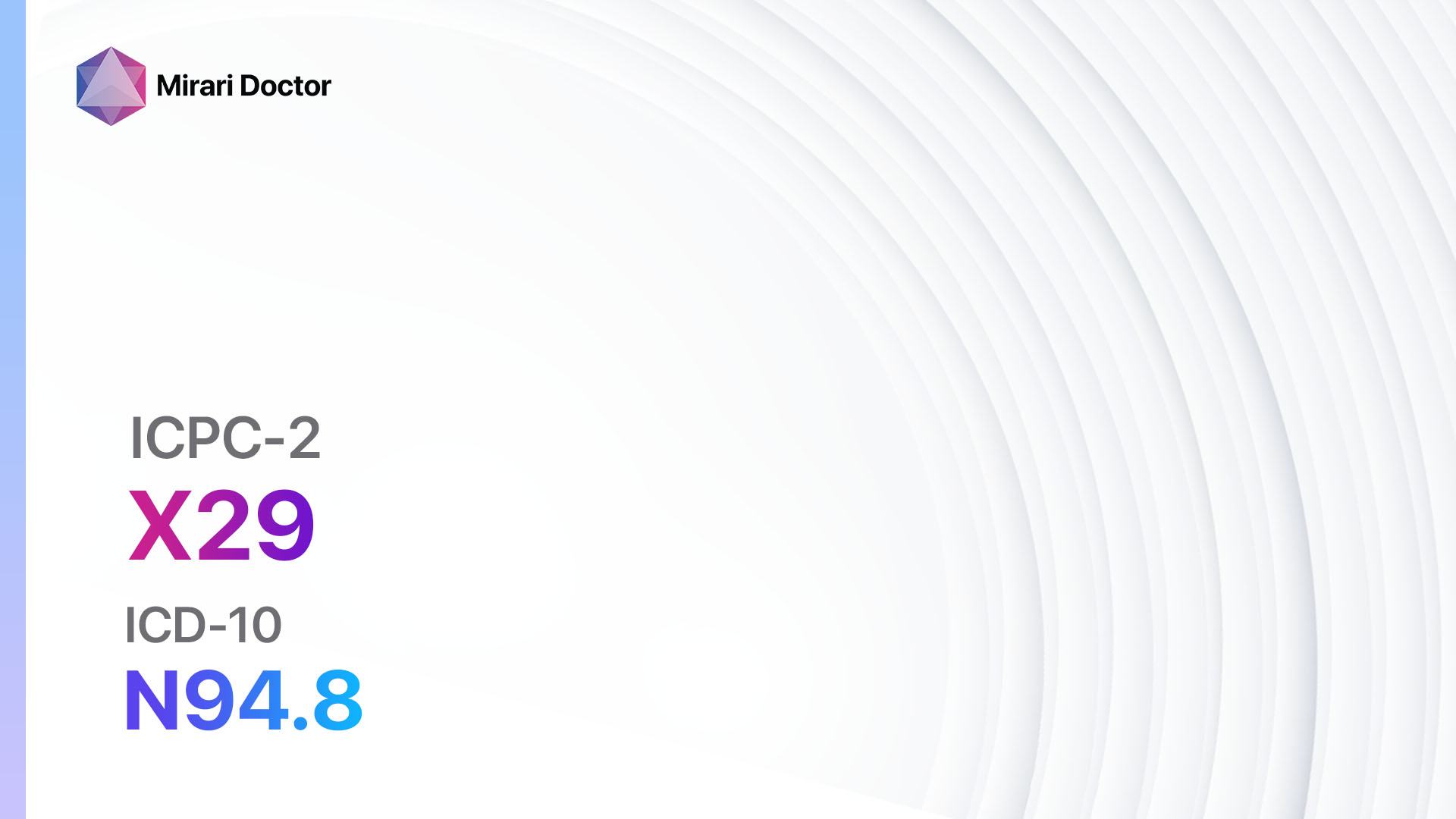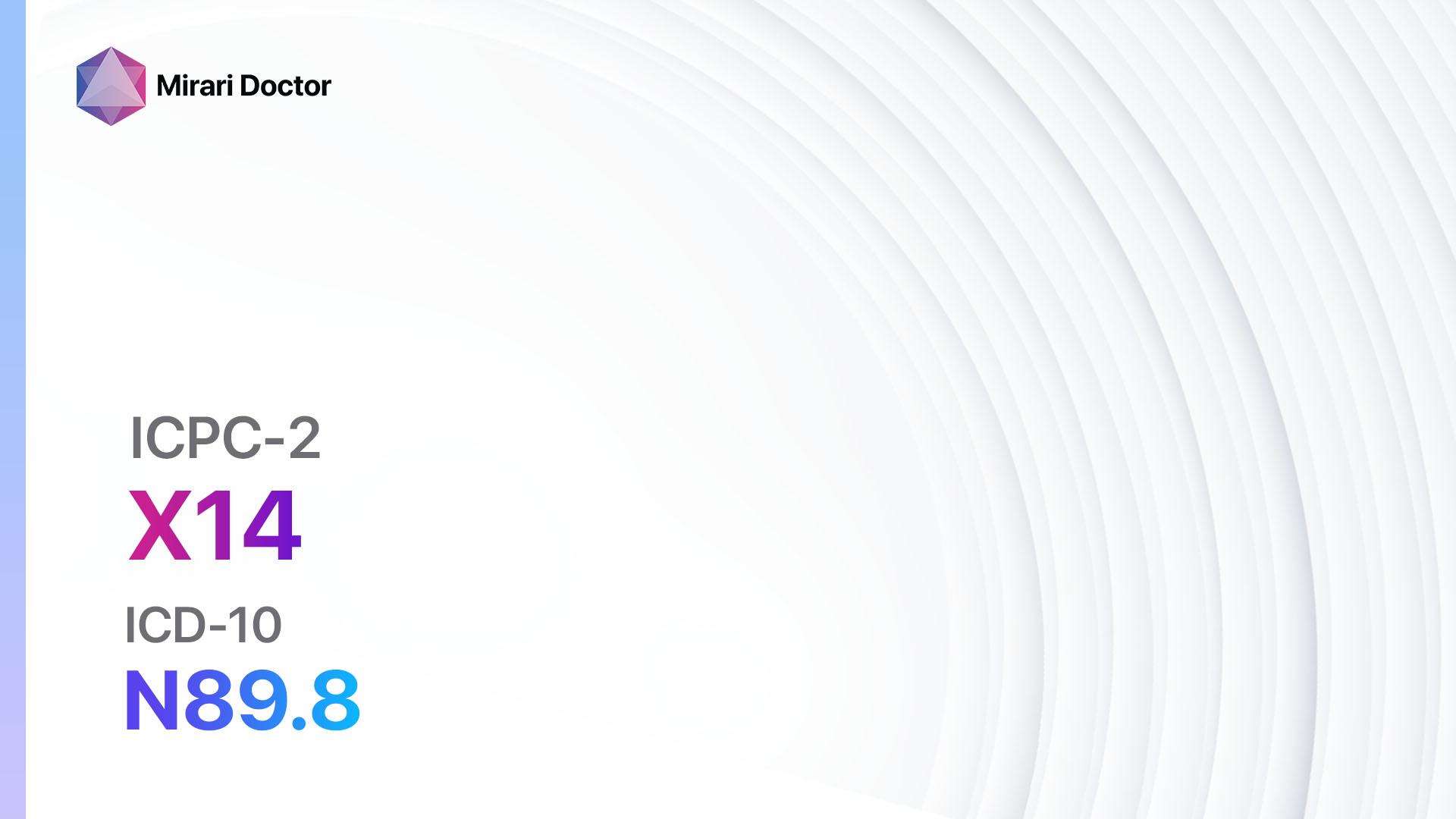
Introduction
Vaginal discharge refers to the abnormal secretion of fluid from the vagina. It is a common symptom that can be caused by various factors, including infections, hormonal changes, and certain medical conditions[1]. This guide aims to provide an overview of the symptoms, causes, diagnostic steps, possible interventions, and lifestyle interventions for vaginal discharge.
Codes
- ICPC-2 Code: X14 Vaginal discharge
- ICD-10 Code: N89.8 Other specified noninflammatory disorders of vagina
Symptoms
- Increased vaginal discharge
- Change in color or consistency of discharge
- Foul odor
- Itching or irritation in the vaginal area
- Pain or discomfort during sexual intercourse
- Pain or burning sensation during urination[2]
Causes
- Bacterial vaginosis: Overgrowth of bacteria in the vagina
- Yeast infection: Overgrowth of Candida fungus in the vagina
- Trichomoniasis: Sexually transmitted infection caused by a parasite
- Gonorrhea: Sexually transmitted infection caused by the bacterium Neisseria gonorrhoeae
- Chlamydia: Sexually transmitted infection caused by the bacterium Chlamydia trachomatis
- Pelvic inflammatory disease: Infection of the female reproductive organs
- Menopause: Hormonal changes during menopause can cause vaginal dryness and discharge
- Pregnancy: Increased vaginal discharge is common during pregnancy
- Allergic reactions: Allergies to certain products, such as soaps or detergents, can cause vaginal discharge[3][4]
Diagnostic Steps
Medical History
- Gather information about the patient’s symptoms, including the duration, frequency, and severity of vaginal discharge
- Ask about any recent sexual activity or changes in sexual partners
- Inquire about the presence of other symptoms, such as itching, odor, or pain
- Assess the patient’s medical history, including any previous infections or conditions related to the reproductive system[5]
Physical Examination
- Perform a pelvic examination to assess the vaginal area for any signs of infection, inflammation, or abnormalities
- Collect a sample of vaginal discharge for laboratory testing, such as a wet mount or culture, to identify the underlying cause of the discharge
- Check for any signs of sexually transmitted infections, such as genital warts or ulcers[6]
Laboratory Tests
- Wet mount: Microscopic examination of a sample of vaginal discharge to identify the presence of yeast cells, bacteria, or parasites
- Vaginal pH test: Measurement of the acidity or alkalinity of the vaginal fluid to determine if it is within the normal range
- Culture and sensitivity testing: Growing the bacteria or fungi from a sample of vaginal discharge in a laboratory to identify the specific organism causing the infection and determine the most effective treatment[7]
Diagnostic Imaging
- In most cases, diagnostic imaging is not necessary for the diagnosis of vaginal discharge. However, in certain situations, such as suspected pelvic inflammatory disease or complications of sexually transmitted infections, imaging modalities like ultrasound or CT scans may be used to assess the reproductive organs[8].
Other Tests
- Depending on the clinical presentation and suspected underlying cause, additional tests may be necessary. These may include blood tests to check for sexually transmitted infections, HIV, or other systemic conditions that may be associated with vaginal discharge[9].
Follow-up and Patient Education
- Schedule a follow-up appointment to discuss the results of the diagnostic tests and determine the appropriate treatment plan
- Provide patient education regarding the importance of practicing safe sex, maintaining good hygiene, and avoiding irritants that may contribute to vaginal discharge
- Discuss the importance of completing the full course of treatment and the potential for recurrent infections[10]
Possible Interventions
Traditional Interventions
Medications:
Top 5 drugs for Vaginal Discharge:
- Antifungal agents (e.g., Fluconazole, Clotrimazole):
- Cost: Generic versions can range from $5 to $30.
- Contraindications: Hypersensitivity to the drug.
- Side effects: Nausea, headache, abdominal pain.
- Severe side effects: Severe allergic reactions, liver toxicity.
- Drug interactions: Warfarin, certain anticonvulsants.
- Warning: Avoid alcohol during treatment.
- Metronidazole:
- Cost: Generic versions can range from $5 to $20.
- Contraindications: First trimester of pregnancy, history of blood disorders.
- Side effects: Nausea, metallic taste in the mouth.
- Severe side effects: Severe allergic reactions, peripheral neuropathy.
- Drug interactions: Alcohol, warfarin.
- Warning: Avoid alcohol during treatment.
- Clindamycin:
- Cost: Generic versions can range from $10 to $30.
- Contraindications: History of colitis or antibiotic-associated diarrhea.
- Side effects: Nausea, diarrhea, abdominal pain.
- Severe side effects: Severe allergic reactions, Clostridium difficile infection.
- Drug interactions: Erythromycin, neuromuscular blockers.
- Warning: Report any persistent diarrhea or abdominal pain.
- Azithromycin:
- Cost: Generic versions can range from $10 to $30.
- Contraindications: Hypersensitivity to macrolide antibiotics.
- Side effects: Nausea, diarrhea, abdominal pain.
- Severe side effects: Severe allergic reactions, liver toxicity.
- Drug interactions: Warfarin, certain antacids.
- Warning: Take on an empty stomach for optimal absorption.
- Ceftriaxone:
- Cost: Generic versions can range from $10 to $50.
- Contraindications: Hypersensitivity to cephalosporin antibiotics.
- Side effects: Injection site reactions, diarrhea.
- Severe side effects: Severe allergic reactions, Clostridium difficile infection.
- Drug interactions: Calcium-containing products.
- Warning: Administered as an intramuscular injection.
Alternative Drugs:
- Fluconazole vaginal suppositories: Localized treatment for vaginal yeast infections.
- Tinidazole: Alternative to metronidazole for the treatment of certain sexually transmitted infections.
- Miconazole: Antifungal cream or suppositories for the treatment of vaginal yeast infections.
- Erythromycin: Alternative to azithromycin for the treatment of certain sexually transmitted infections.
- Doxycycline: Alternative to ceftriaxone for the treatment of certain sexually transmitted infections.
Surgical Procedures:
- In most cases, surgical procedures are not necessary for the treatment of vaginal discharge. However, in rare cases where the underlying cause is a structural abnormality or persistent infection, surgical intervention may be considered. The specific procedure will depend on the individual case and should be discussed with a healthcare provider.
Alternative Interventions
- Probiotics: Oral or vaginal administration of beneficial bacteria to restore the natural balance of vaginal flora. Cost: $10-$50 for a month’s supply.
- Tea tree oil: Topical application of diluted tea tree oil to reduce inflammation and fight against fungal or bacterial infections. Cost: $5-$15 for a small bottle.
- Boric acid suppositories: Vaginal suppositories containing boric acid to restore the natural pH of the vagina and treat certain infections. Cost: $10-$20 for a box of suppositories.
- Yogurt: Consumption of plain, unsweetened yogurt with live cultures to promote the growth of beneficial bacteria in the vagina. Cost: $2-$5 for a container of yogurt.
- Garlic: Insertion of a garlic clove into the vagina to provide antimicrobial properties and reduce infection. Cost: $1-$2 for a garlic bulb.
Lifestyle Interventions
- Good hygiene: Regularly washing the genital area with mild soap and water, avoiding douching or using harsh products that may disrupt the natural balance of vaginal flora. Cost: Minimal.
- Wearing breathable underwear: Choosing cotton underwear and avoiding tight-fitting clothing to promote airflow and reduce moisture in the vaginal area. Cost: Varies.
- Avoiding irritants: Avoiding scented products, such as soaps, tampons, or pads, that may cause irritation or allergic reactions. Cost: Minimal.
- Practicing safe sex: Using condoms or other barrier methods during sexual intercourse to reduce the risk of sexually transmitted infections. Cost: Varies.
- Maintaining a healthy lifestyle: Eating a balanced diet, exercising regularly, and managing stress to support overall vaginal health. Cost: Varies.
It is important to note that the cost ranges provided are approximate and may vary depending on the location and availability of the interventions. It is recommended to consult with a healthcare provider for personalized treatment options and cost considerations.
Mirari Cold Plasma Alternative Intervention
Understanding Mirari Cold Plasma
- Safe and Non-Invasive Treatment: Mirari Cold Plasma is a safe and non-invasive treatment option for various skin conditions. It does not require incisions, minimizing the risk of scarring, bleeding, or tissue damage.
- Efficient Extraction of Foreign Bodies: Mirari Cold Plasma facilitates the removal of foreign bodies from the skin by degrading and dissociating organic matter, allowing easier access and extraction.
- Pain Reduction and Comfort: Mirari Cold Plasma has a local analgesic effect, providing pain relief during the treatment, making it more comfortable for the patient.
- Reduced Risk of Infection: Mirari Cold Plasma has antimicrobial properties, effectively killing bacteria and reducing the risk of infection.
- Accelerated Healing and Minimal Scarring: Mirari Cold Plasma stimulates wound healing and tissue regeneration, reducing healing time and minimizing the formation of scars.
Mirari Cold Plasma Prescription
Video instructions for using Mirari Cold Plasma Device – X14 Vaginal discharge (ICD-10:N89.8)
| Mild | Moderate | Severe |
| Mode setting: 1 (Infection) Location: 0 (Localized) Morning: 15 minutes, Evening: 15 minutes |
Mode setting: 1 (Infection) Location: 0 (Localized) Morning: 30 minutes, Lunch: 30 minutes, Evening: 30 minutes |
Mode setting: 1 (Infection) Location: 0 (Localized) Morning: 30 minutes, Lunch: 30 minutes, Evening: 30 minutes |
| Mode setting: 2 (Wound Healing) Location: 0 (Localized) Morning: 15 minutes, Evening: 15 minutes |
Mode setting: 2 (Wound Healing) Location: 0 (Localized) Morning: 30 minutes, Lunch: 30 minutes, Evening: 30 minutes |
Mode setting: 2 (Wound Healing) Location: 0 (Localized) Morning: 30 minutes, Lunch: 30 minutes, Evening: 30 minutes |
| Mode setting: 8 (Insomnia) Location: 7 (Neuro system & ENT) Morning: 15 minutes, Evening: 15 minutes |
Mode setting: 8 (Insomnia) Location: 7 (Neuro system & ENT) Morning: 30 minutes, Lunch: 30 minutes, Evening: 30 minutes |
Mode setting: 8 (Insomnia) Location: 7 (Neuro system & ENT) Morning: 30 minutes, Lunch: 30 minutes, Evening: 30 minutes |
| Mode setting: 7 (Immunotherapy) Location: 1 (Sacrum) Morning: 15 minutes, Evening: 15 minutes |
Mode setting: 7 (Immunotherapy) Location: 1 (Sacrum) Morning: 30 minutes, Lunch: 30 minutes, Evening: 30 minutes |
Mode setting: 7 (Immunotherapy) Location: 1 (Sacrum) Morning: 30 minutes, Lunch: 30 minutes, Evening: 30 minutes |
| Total Morning: 60 minutes approx. $10 USD, Evening: 60 minutes approx. $10 USD |
Total Morning: 120 minutes approx. $20 USD, Lunch: 120 minutes approx. $20 USD, Evening: 120 minutes approx. $20 USD, |
Total Morning: 120 minutes approx. $20 USD, Lunch: 120 minutes approx. $20 USD, Evening: 120 minutes approx. $20 USD, |
| Usual treatment for 7-60 days approx. $140 USD – $1200 USD | Usual treatment for 6-8 weeks approx. $2,520 USD – $3,360 USD |
Usual treatment for 3-6 months approx. $5,400 USD – $10,800 USD
|
 |
|
Use the Mirari Cold Plasma device to treat Vaginal discharge effectively.
WARNING: MIRARI COLD PLASMA IS DESIGNED FOR THE HUMAN BODY WITHOUT ANY ARTIFICIAL OR THIRD PARTY PRODUCTS. USE OF OTHER PRODUCTS IN COMBINATION WITH MIRARI COLD PLASMA MAY CAUSE UNPREDICTABLE EFFECTS, HARM OR INJURY. PLEASE CONSULT A MEDICAL PROFESSIONAL BEFORE COMBINING ANY OTHER PRODUCTS WITH USE OF MIRARI.
Step 1: Cleanse the Skin
- Start by cleaning the affected area of the skin with a gentle cleanser or mild soap and water. Gently pat the area dry with a clean towel.
Step 2: Prepare the Mirari Cold Plasma device
- Ensure that the Mirari Cold Plasma device is fully charged or has fresh batteries as per the manufacturer’s instructions. Make sure the device is clean and in good working condition.
- Switch on the Mirari device using the power button or by following the specific instructions provided with the device.
- Some Mirari devices may have adjustable settings for intensity or treatment duration. Follow the manufacturer’s instructions to select the appropriate settings based on your needs and the recommended guidelines.
Step 3: Apply the Device
- Place the Mirari device in direct contact with the affected area of the skin. Gently glide or hold the device over the skin surface, ensuring even coverage of the area experiencing.
- Slowly move the Mirari device in a circular motion or follow a specific pattern as indicated in the user manual. This helps ensure thorough treatment coverage.
Step 4: Monitor and Assess:
- Keep track of your progress and evaluate the effectiveness of the Mirari device in managing your Vaginal discharge. If you have any concerns or notice any adverse reactions, consult with your health care professional.
Note
This guide is for informational purposes only and should not replace the advice of a medical professional. Always consult with your healthcare provider or a qualified medical professional for personal advice, diagnosis, or treatment. Do not solely rely on the information presented here for decisions about your health. Use of this information is at your own risk. The authors of this guide, nor any associated entities or platforms, are not responsible for any potential adverse effects or outcomes based on the content.
Mirari Cold Plasma System Disclaimer
- Purpose: The Mirari Cold Plasma System is a Class 2 medical device designed for use by trained healthcare professionals. It is registered for use in Thailand and Vietnam. It is not intended for use outside of these locations.
- Informational Use: The content and information provided with the device are for educational and informational purposes only. They are not a substitute for professional medical advice or care.
- Variable Outcomes: While the device is approved for specific uses, individual outcomes can differ. We do not assert or guarantee specific medical outcomes.
- Consultation: Prior to utilizing the device or making decisions based on its content, it is essential to consult with a Certified Mirari Tele-Therapist and your medical healthcare provider regarding specific protocols.
- Liability: By using this device, users are acknowledging and accepting all potential risks. Neither the manufacturer nor the distributor will be held accountable for any adverse reactions, injuries, or damages stemming from its use.
- Geographical Availability: This device has received approval for designated purposes by the Thai and Vietnam FDA. As of now, outside of Thailand and Vietnam, the Mirari Cold Plasma System is not available for purchase or use.
References
- Mayo Clinic. (2021). Vaginal discharge. Retrieved from https://www.mayoclinic.org/symptoms/vaginal-discharge/basics/definition/sym-20050825
- Centers for Disease Control and Prevention. (2021). Vaginal Discharge. Retrieved from https://www.cdc.gov/std/general/vaginal-discharge.htm
- American College of Obstetricians and Gynecologists. (2020). Vaginitis. Retrieved from https://www.acog.org/womens-health/faqs/vaginitis
- Sim, M., Logan, S., & Goh, L. H. (2020). Vaginal discharge: evaluation and management in primary care. Singapore Medical Journal, 61(6), 297-301.
- Centers for Disease Control and Prevention. (2021). Bacterial Vaginosis – CDC Fact Sheet. Retrieved from https://www.cdc.gov/std/bv/stdfact-bacterial-vaginosis.htm
- Centers for Disease Control and Prevention. (2021). Vulvovaginal Candidiasis. Retrieved from https://www.cdc.gov/std/treatment-guidelines/candidiasis.htm
- Centers for Disease Control and Prevention. (2021). Testing and Diagnosis for Candidiasis. Retrieved from https://www.cdc.gov/candidiasis/testing/index.html
- Mayo Clinic. (2021). Yeast infection (vaginal) – Diagnosis and treatment. Retrieved from https://www.mayoclinic.org/diseases-conditions/yeast-infection/diagnosis-treatment/drc-20379004
- Centers for Disease Control and Prevention. (2021). Trichomoniasis – CDC Fact Sheet. Retrieved from https://www.cdc.gov/std/trichomonas/stdfact-trichomoniasis.htm
- Spence, D., & Melville, C. (2007). Vaginal discharge. BMJ, 335(7630), 1147-1151.
Related articles
Made in USA



